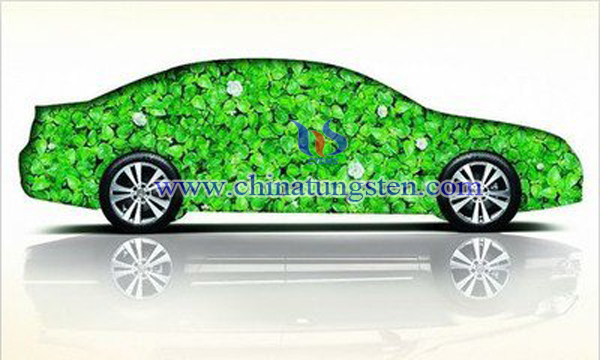Tungsten Molybdenum Graphene will Reduce Hydrogen Fuel Cell Costs
- Details
- Category: Tungsten's News
- Published on Tuesday, 05 December 2017 19:08
Hydrogen energy is regarded as the most promising clean energy in the 21st century. All countries in the world have made great progress in the field of hydrogen energy batteries and strive to be in the forefront.

The key problem of hydrogen energy fuel cell production is how to make cheap hydrogen and how to store hydrogen at low cost. Because these two problems can not be solved effectively, Tesla and BYD electric cars can only be powered by lithium batteries. Because the application of lithium battery seems to have reached the limit, Tesla is still researching new power battery, which may be super capacitor or hydrolytic hydrogen battery. Hydrogen production from electrolyzed water is a traditional hydrogen production method. The principle of hydrogen production is quite simple. A pair of electrodes immersed in the electrolyte and a membrane to prevent permeation of hydrogen gas are arranged at intervals to form a water electrolysis chamber. The electrolyte is usually a solution containing about 30% potassium hydroxide, and water is decomposed into hydrogen and oxygen when it is connected to the direct current. Hydrogen electrolysis of hydrogen, technology is mature, simple equipment, does not produce pollution, high purity hydrogen can be obtained. But the disadvantage is that the energy consumption is large, the cost of hydrogen production is high and the platinum catalyst is needed.

With the development of nanotechnology, monolayer materials with special functions have been studied by scholars. Nano monolayer tungsten disulfide, as a novel graphene-like material, has also been used to study the catalytic properties of hydrolyzed hydrogen.
However, in experiments it has been found that tungsten disulfide is a semiconductor, which limits its ability to conduct electrons. To solve this problem, the team added a highly conductive form of carbon redox-type graphene oxide. Then, to further reduce the free energy, molybdenum disulfide was added to form a tungsten disulfide film in which tungsten molybdenum and graphene alternate with each other. By compounding, the voltage required to decompose the water from 200 millivolts by the tungsten disulfide film is reduced by half compared to the original tungsten carbide catalyst.
From a theoretical point of view, this means that the production of electrohydrolyzed hydrogen batteries will be reduced by half the cost. The combination of three kinds of nanomaterials, the catalytic activity of which approaches or exceeds the platinum catalyst, and the cost price is controlled, and this achievement is another major breakthrough in the civilized hydride hydrogen battery. Scientists think that hydrogen battery energy will accelerate into the people's lives, the hydrogen fuel cell can not only provide clean energy vehicles, is expected to fully replace lithium or silicon in the mobile phone, many applications such as solar energy, will be more clean, more durable, more sustainable economic energy.
- Tungsten Manufacturer & Supplier, Chinatungsten Online: www.chinatungsten.com
- Tungsten News & Prices of China Tungsten Industry Association: www.ctia.com.cn
- Molybdenum News & Price: news.molybdenum.com.cn
- Tel.: 86 592 5129696; Fax: 86 592 5129797; Email: sales@chinatungsten.com



 sales@chinatungsten.com
sales@chinatungsten.com